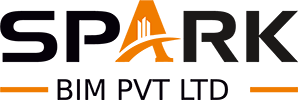Table of Contents
ToggleIn the rapidly evolving AEC (Architecture, Engineering, and Construction) industry, efficiency, precision, and cost-effectiveness are critical. One transformative innovation that has redefined project workflows is Scan to BIM (Building Information Modeling). This technology converts point cloud data captured from laser scans into intelligent 3D BIM models, creating a precise digital replica of existing structures.
However, despite its advantages, managing the Scan to BIM process in-house can be overwhelming for many firms. This has led to a growing trend: Outsourcing Scan to BIM.
In this blog, we’ll explore why Outsourcing Scan to BIM Services is becoming preferred across industries like architecture, construction, real estate, and facility management. The benefits are compelling and multifaceted, from cost savings and access to specialized expertise to faster turnaround times and scalability.
What is Scan to BIM
Before diving into the reasons behind outsourcing, it’s essential to understand what Scan to BIM entails. The process starts with 3D laser scanning, commonly LiDAR or photogrammetry, to capture a structure’s exact geometry.
The resulting point cloud data is imported into BIM software like Autodesk Revit to create detailed and data-rich 3D models. These models are crucial for construction projects’ renovation, retrofitting, facility management, and clash detection.
The Rising Demand for Scan to BIM Services
The AEC industry is increasingly embracing digital transformation. With older buildings needing upgrades, adaptive reuse gaining popularity, and the need for highly accurate as-built documentation, Scan to BIM has become a standard requirement.
But not every firm has the in-house capability to handle the entire workflow—from scanning to modeling and quality assurance. This is where Outsourcing Scan to BIM shines as a strategic move, offering both economic and operational advantages.
1. Access to Specialized Expertise
Creating high-quality BIM models from scan data requires specialized knowledge. The process demands trained professionals, from handling complex point cloud data to understanding structural and architectural detailing.
When you opt for Outsourcing Scan to BIM, you gain immediate access to teams with deep expertise in:
- Architectural modeling
- Structural BIM modeling
- MEP (Mechanical, Electrical, Plumbing) integration
- Software tools like Revit, Navisworks, and AutoCAD
Companies can leverage this expertise on demand instead of investing time and money into building an internal team.
2. Cost-Effectiveness
One of the primary motivations behind outsourcing is cost savings. Establishing an in-house Scan to BIM team involves substantial capital expenditures – equipment, software licenses, training, and labour costs – which is not always feasible for small—to mid-sized architectural firms or real estate developers.
Outsourcing Scan to BIM eliminates these overheads. You pay only for what you need, whether a single project or ongoing collaboration. Moreover, outsourcing providers based in countries with lower labour costs can offer high-quality services at a fraction of the cost.
3. Faster Turnaround Time
Time is money in the construction and real estate industries. Delays in generating BIM models can stall decision-making, project approvals, and construction schedules.
Outsourcing partners often have larger teams and streamlined processes. They can deliver high-quality models within tight deadlines, helping you keep your project on track.
Many outsourcing firms also operate across different time zones, enabling round-the-clock work cycles that accelerate delivery.
4. Scalability and Flexibility
Every project is different. A commercial renovation project might require more detailed structural modelling, while a retail space remodel might focus on interior elements. Scaling internal resources to meet fluctuating demands can be inefficient and expensive.
By Outsourcing Scan to BIM, firms can easily scale up or down based on project needs. This flexibility is particularly valuable for construction companies juggling multiple projects or facility managers handling various building types.
Also Read, Scan to BIM Solutions for Contractors
5. Focus on Core Competencies
Architecture and construction firms thrive on creativity, design innovation, and project management. Diverting attention and resources toward managing complex scan-to-model processes can detract from core business functions.
Outsourcing Scan to BIM allows internal teams to stay focused on their strengths—design, client engagement, and on-site execution—while technical experts handle the modeling.
This division of labour enhances overall productivity and ensures a higher-quality end product.
6. Quality Assurance and Accuracy
In industries where millimeter-level precision matters, accuracy is non-negotiable. Professional BIM outsourcing firms typically have stringent quality control processes and experienced QA teams to ensure compliance with international standards like LOD (Level of Development), COBie, and IFC formats.
They can also provide value-added services like clash detection, model audits, and documentation as per regional standards (e.g., UK BIM Framework, US GSA).
7. Technology Access Without Capital Investment
Scan to BIM involves high-tech tools like terrestrial laser scanners, drones, and cutting-edge BIM software. Keeping up with evolving tech trends is a significant challenge for many in-house teams.
When you choose Outsourcing Scan to BIM, you rent access to the latest hardware and software without the associated costs. Outsourcing providers often have early access to software updates, plugins, and automation tools that streamline the process and enhance output quality.
8. Risk Reduction
By partnering with experienced BIM service providers, firms transfer significant operational risks. These providers are usually well-versed in contract documentation, regulatory compliance, and data security protocols.
Moreover, Service Level Agreements (SLAs) often include guarantees on delivery timelines, model accuracy, and revision support, providing clients peace of mind.
9. Competitive Advantage in the Market
In highly competitive markets like architecture and construction, the ability to offer precise and detailed BIM models quickly can set you apart.
Outsourcing Scan to BIM enables even smaller firms to compete with larger players by offering high-end deliverables without inflating their overheads. This levels the playing field and opens new market opportunities.
How to Choose the Right Scan to BIM Outsourcing Partner
Not all outsourcing firms are equal. To get the best results, evaluate potential partners based on:
- Experience: Check their project portfolio and industry specializations.
- Technology Stack: Ensure they use the latest software and tools.
- Compliance: Look for knowledge of global BIM standards (e.g., ISO 19650).
- Communication: Choose firms with strong project management and regular updates.
- Data Security: Ensure they follow strict data protection and NDA policies.
Now is the time to evaluate your in-house capabilities and see how outsourcing can enhance your project outcomes. The future of BIM is not just digital—it’s collaborative, and outsourcing is at the core of that evolution.


